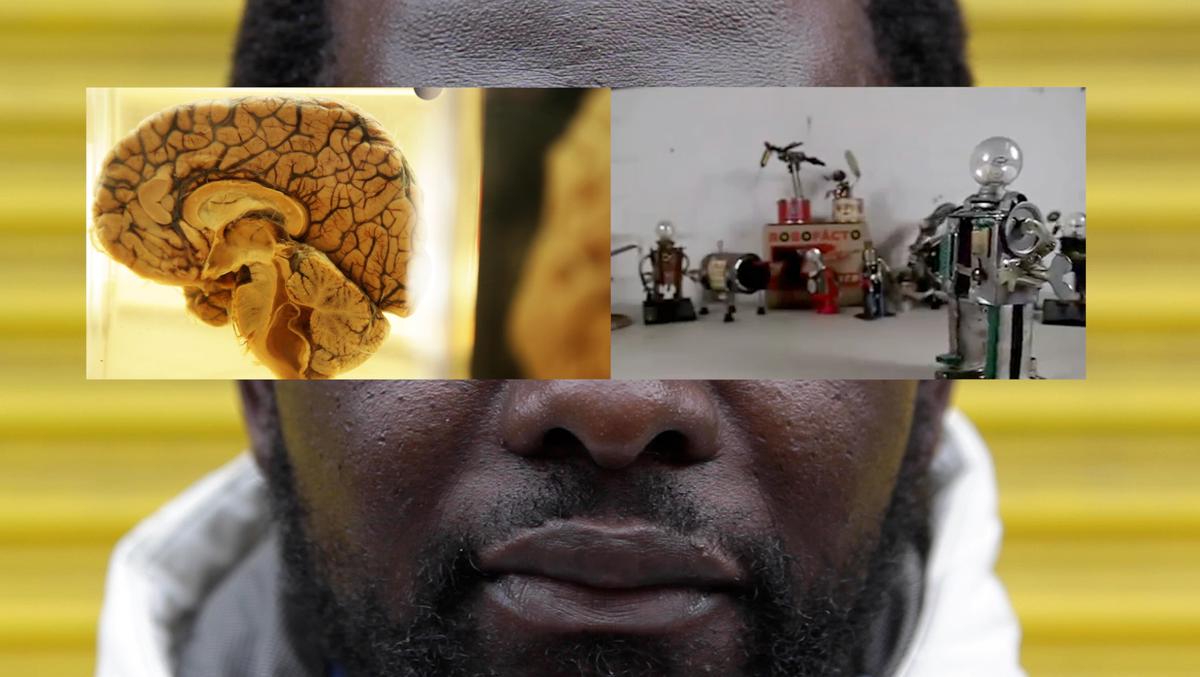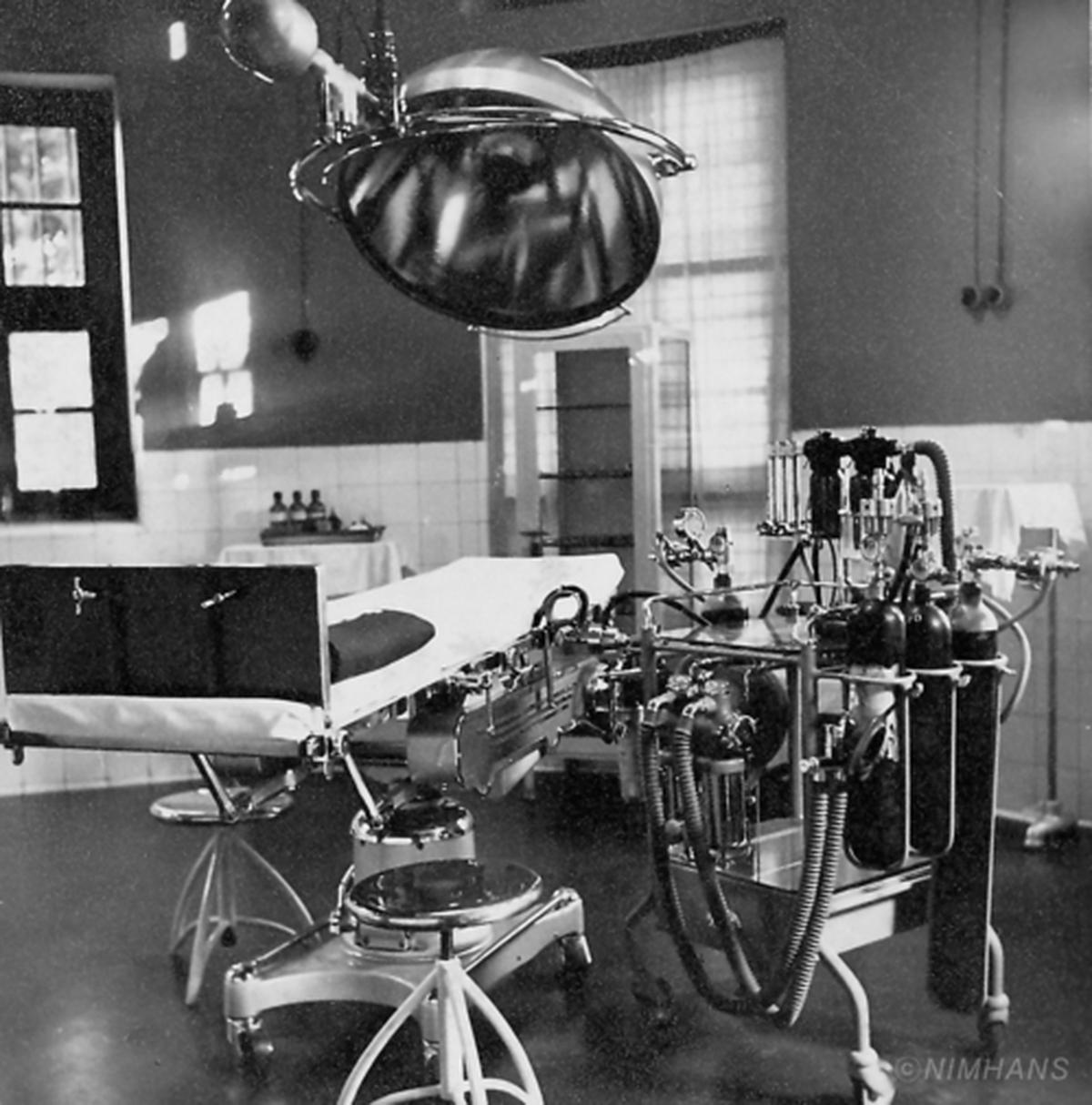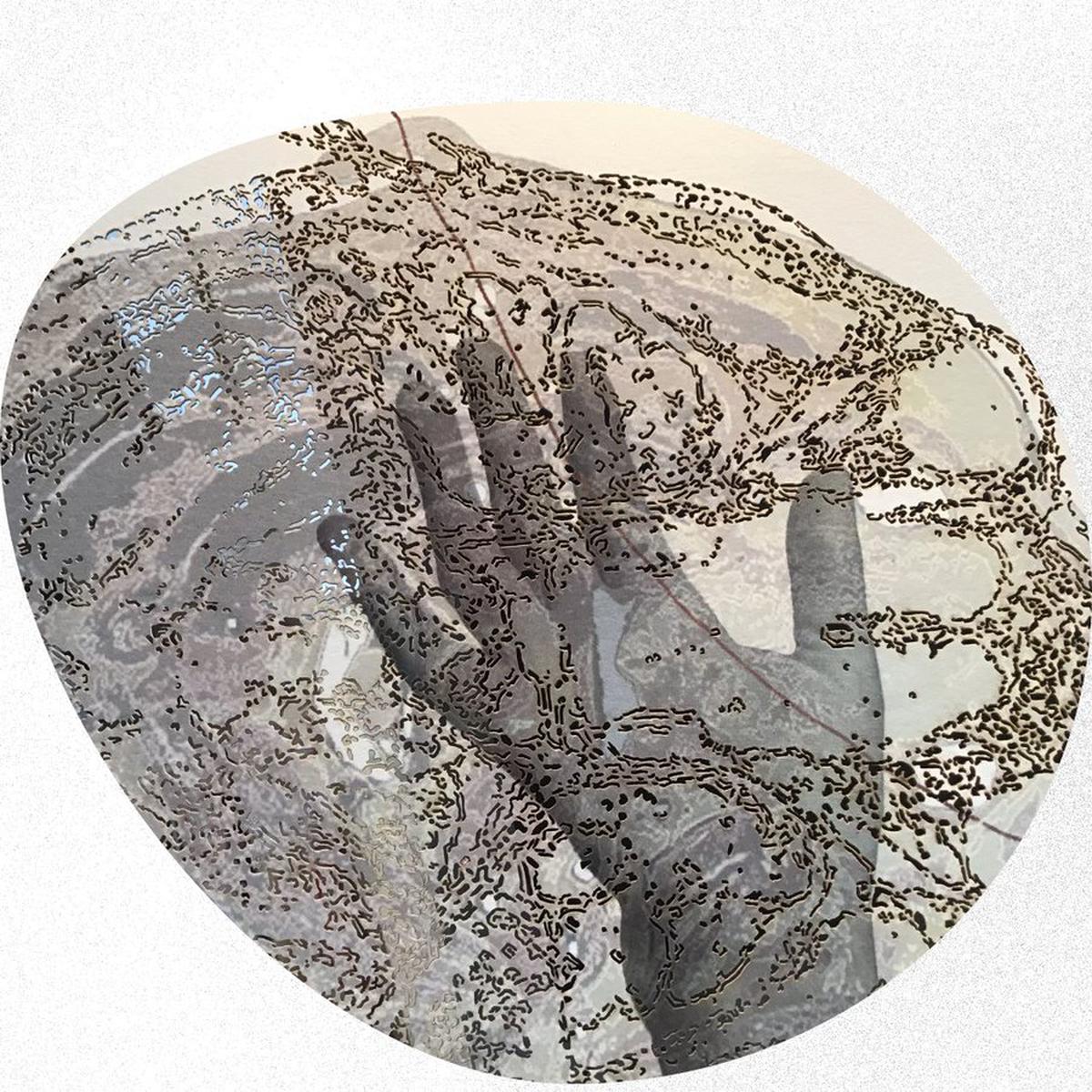A digital exhibition in Bengaluru examines the human mind and the worlds of philosophers, neuroscientists and cultural theorists
A digital exhibition in Bengaluru examines the human mind and the worlds of philosophers, neuroscientists and cultural theorists
I gaze at an unusual South Asia map: it is a ragged dull-yellow chart from 1921 that estimates the number of “insanes” on the sub-continent. This map has five translucent dots, like crystal balls, which on touch takes me to a different world, a different time. The ball near Kolkata transports me to the 1800s, to a hand-coloured print of the city’s mental hospital.
Here I learn about Eliza Moirs, 44, an inmate here since February 1860. She has blue eyes and dark-brown hair, but no one knows where she was born, or who she was born to. In the asylum, she was prone to occasional bouts of violence and was “a source of annoyance to the other patients”.

Still from ‘Black Men’s Minds’
She did not improve, and in February 1863, the medical department sought permission to send her and several others aboard Hougoumont, a Britain-bound convict ship. The inspector hoped that Eliza’s return to the homeland would help her recovery. I am not sure what happens to Eliza: does she board the ship? Does she get better?
Her story is part of ‘The Asylum’, a chronicle of the Indian Mental Hospital, one of the displays at Science Gallery Bengaluru’s digital exhibition PSYCHE.

Photograph part of the exhibit ‘The Asylum’ provided by the NIMHANS Museum.
The exhibition features the work of neuroscientists, artists, psychologists, historians, filmmakers, sociologists, writers and performers who explore the complexities of the mind. There’s a media lounge curated with relevant books, podcasts, video games and an activity pack that offers puzzles and mind-games to solve at home.
The human mind is an extraordinary thing. “We know that the mind probably relies on the brain to create itself, yet how the brain creates the mind is absolutely unknown,” says Sanjeev Jain at the psychiatry department of the National Institute of Mental Health and Neurosciences (NIMHANS) who is an academic advisor to PSYCHE.
Panic loops
Wandering, I drop into ‘The Serpent of a Thousand Coils’, an interactive game that provides a glimpse into the minds of anxiety sufferers. Built like a 1980s’ video game, the player moves through several dizzying paths. At each juncture, they must respond to their character’s turmoil to progress to the next phase, choices that determine a player’s anxiety level, and ultimately their escape from the mind’s seemingly endless panic loops.

Artwork part of ‘Change My Mind’ project by Andrew Carnie
The game is not intended to merely embroil a participant into what an anxiety sufferer might go through. “There is this sensorial screen that exists between every visitor and the direct experience of anxiety,” says artist Anuj Malhotra, founder of Lightcube. “We want them to be able to meditate on how anxiety actually works on a minute to minute, day to day basis,” he adds.
I pass through several other rooms: ‘Black Men’s Minds’ is an installation led by the voices of Black men, a neglected community on mental health; the ‘McGill Pain Questionnaire’ investigates the classic pain assessment tool; ‘Schizophrenia and the Brain’ surveys ongoing clinical research to better understand schizophrenia; ‘Playing with Reality’ explores psychosis and its implications on reality; ‘Change my Mind’ and ‘Synthetic Self’ probe the impacts of new technologies on the mind — brain implants, robotic arms and microchip implants.
Lessons from the past
“The response has been overwhelmingly positive,” says Jahnavi Phalkey, founding director of Science Gallery Bengaluru, a non-profit public institution that seeks to ‘bring science back into culture’. Young people in particular, says Jahnavi, have been reading up and posing questions often situated in their daily lives.

‘Schizophrenia and the brain’
| Photo Credit: Science Gallery Bengaluru
I go back into the ‘The Asylum’ exhibit, looking at old photographs, reading letters, and thinking about lessons from the past. “Our purpose was to colour these stories, to introduce other hues, so that it is not a black and white rendition of mental hospitals,” says Alok Sarin, a clinical psychiatrist, and one of the exhibit’s scholars. Too often, institutions have been painted in bleak shades, as centres of squalor and cruelty, but this is only part of the history, says Alok.
To make life bearable, Ranchi’s Indian Mental Hospital (exclusively for ‘natives’) in the 1930s organised sports, set up a cinema theatre and provided occupational therapy. Major J.E. Dhunjibhoy, the superintendent, was devoted to his job: reading, travelling, experimenting widely with new medical treatments that could alleviate suffering. Across the road, at the European Hospital, Lt. Colonel Owen Berkeley Hill, the director, allowed patients to leave the campus unchaperoned during the day, abolished the practice of secluding and restraining patients, and mandated that nurses had a degree in psychological medicine.
Compassionate, dedicated
Today, these hospitals have been shut down or downsized, Alok says, and community care designed to replace the institution has not been adequately established. “We need a variety of services including mental institutions where human rights are respected, where things are done properly,” says Alok. “The focus of our exhibit is to bring the mental hospital back into the light.” As I leave the exhibition, I want to know more about heroes such as Major Dhunjibhoy — compassionate, dedicated men and women.
Its collaborators hope that PSYCHE will inspire young adults to engage with questions of the mind: inquiries of history and culture, science and technology, medicine and art. And perhaps someday, they will help shine a light on the answers that elude us.
Science Gallery Bengaluru’s digital exhibition PSYCHE can be visited here: https://psyche.scigalleryblr.org/
The writer is a freelance journalist.
Stay connected with us on social media platform for instant update click here to join our Twitter, & Facebook
We are now on Telegram. Click here to join our channel (@TechiUpdate) and stay updated with the latest Technology headlines.
For all the latest Art-Culture News Click Here
